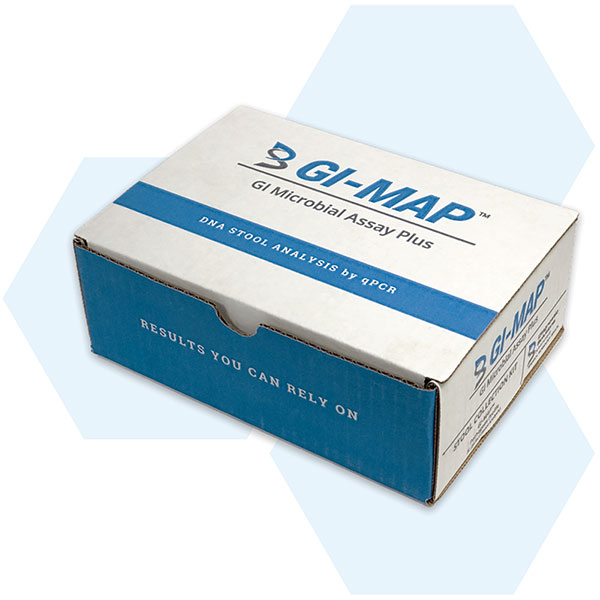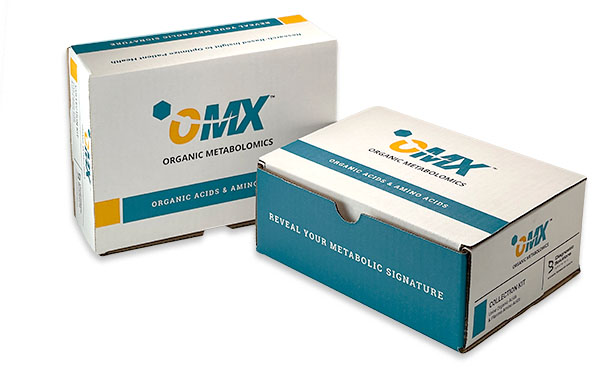Fecal Gluten Peptide (Stool Gluten)
by Cat Simmons MS, RD, CDCES
Detects Exposure to Gluten for Better Dietary Management
Gluten Peptide is commonly present in stool. Gluten-containing grains (such as wheat, rye, barley, and oat*) are digested into their gliadin and glutenin subunits. A specific section of the gliadin protein, referred to as the 33-mer peptide, is resistant to digestion in the human gastrointestinal (GI) tract and functions as a significant immune trigger in certain individuals, including those with celiac disease (CD).1 Even in non-celiac gluten-sensitive (NCGS) individuals, the 33-mer protein can be antigenic, inducing food sensitivities and intestinal permeability (leaky gut). When intestinal permeability is present, this antigenic peptide can drive extra-intestinal symptoms – those presenting outside the GI tract – such as skin manifestations, headaches, behavioral symptoms, and more.
This test is a direct quantification of the 33-mer gliadin peptide present in stool samples. Because this peptide is highly resistant to human digestion, it can be accurately detected in a person's stool several days after consumption of gluten. The Gluten Peptide (Stool Gluten) marker can be ordered as an add-on to the GI-MAP in the Results Portal.
The Benefits of Quantitatively Assessing Gluten in Stool
Currently, the only approach to managing celiac disease is to maintain a strict gluten-free (GF) diet for life. Additionally, as non-celiac gluten-related disorders are emerging more and more in literature and clinical practice, many people choose to be gluten-free to reduce GI inflammation and associated symptoms, and to prevent or heal intestinal permeability.
Although conceptually straight forward, there are inherent challenges to following a GF diet as recommended. Estimated compliance rates vary considerably (anywhere from 17–80%)2,3 depending on factors such as patient age, age of diagnosis, income, gender, and others. Celiac.org cites that up to 50% of celiac patients still report symptoms while following a GF diet. There are abundant opportunities for accidental exposure to gluten from hidden food sources and even medications. Food labeling and label reading is an added complication and a 2019 study found that up to 32% of restaurant-labeled GF foods can be cross contaminated.4
The importance of monitoring a GF diet is obvious, however there are currently no clear guidelines for exploring adherence or assessing the outcome. Recent studies suggest that patients cannot rely on dietary best practices or even symptoms to understand if they have been exposed to gluten.2,5
The Fecal Gluten Peptide Add-On (Stool Gluten) is an accurate and noninvasive method that enables a direct, quantitative assessment of gluten consumption. The amount of gluten peptide detected in stool rises in proportion to the amount of gluten consumed. Thus, the test can be useful for monitoring occasional exposures or exposures that may be routine in a persons' lifestyle (even if they are unknown).
Fecal gluten monitoring is an important tool to:
- Quantitively evaluate amount of gluten peptide in stool for accurate assessment of potential exposure
- Monitor adherence to gluten-free diet for anyone aiming to follow a GF lifestyle
- Monitor accidental (unintentional) consumption of gluten for both the celiac and non-celiac gluten sensitive patient, even if they are not experiencing symptoms
- Assist in the assessment of refractory celiac (failure to heal despite going GF)
How Fecal Gluten Peptide (Stool Gluten) Compares to Anti-Gliadin IgA Testing
The Fecal Gluten Peptide assay is a direct measurement of the 33-mer gliadin peptide in stool. It is not an antibody or immune response test (as is fecal SIgA). If the gluten peptide is present in stool, then gluten has entered the digestive tract via consumption.
As a direct peptide measurement, it is not subject to the same limitations of immunosuppression as with antibody testing.
The Fecal Gluten Peptide marker helps eliminate the ambiguity of cross reactivity. If the Fecal Gluten Peptide is detected in stool, the patient has been directly exposure to gluten, specifically.
The detection of gluten peptide in stool indicates recent intake of gluten (within two to four days). When gluten is detected in the stool of a patient on a GF diet, the Fecal Gluten Peptide marker can guide the patient and healthcare provider to the source of "hidden" gluten exposures and increase adherence to a true therapeutic diet.

Author: Cat Simmons, MS, RDN, CDCES
Cat is a Registered Dietitian Nutritionist (RDN) and has spent most of her career in the functional laboratory diagnostic space. She has a decade of experience in advanced laboratory interpretation, education, and counseling in addition to clinical practice. She takes a functional and integrative approach to health with a firm belief that "all disease begins in the gut". Cat also is a certified diabetes care and education specialist. In clinical practice, Cat specializes in cardiovascular prevention, sport performance nutrition; gluten sensitivity, celiac and autoimmune nutrition; the gut-brain connection, and of course all things related to the digestion, the microbiome and intestinal health.
REFERENCES
- Shan, L., et al., Structural basis for gluten intolerance in celiac sprue. Science, 2002. 297(5590): p. 2275-9.
- Moreno, M.L., et al., Biomarkers to Monitor Gluten-Free Diet Compliance in Celiac Patients. Nutrients, 2017. 9(1).
- Pietzak, M.M., Follow-up of patients with celiac disease: achieving compliance with treatment. Gastroenterology, 2005. 128(4 Suppl 1): p. S135-41.
- Lerner, B.A., et al., Detection of Gluten in Gluten-Free Labeled Restaurant Food: Analysis of Crowd-Sourced Data. Am J Gastroenterol, 2019. 114(5): p. 792-797.
- Comino, I., et al., Monitoring of gluten-free diet compliance in celiac patients by assessment of gliadin 33-mer equivalent epitopes in feces. Am J Clin Nutr, 2012. 95(3): p. 670-7.
- www.celiac.org
Results You Can Rely On
Research indicates that gut health impacts every area of human health.
Optimal health – it all starts with the GI-MAP ™ – Comprehensive DNA Stool Analysis via qPCR.
Metabolic Status
OMX is an advanced organic acids and amino acids profile.
Research-based insight to optimize patient health. Available in urine & plasma, or urine only profiles.


